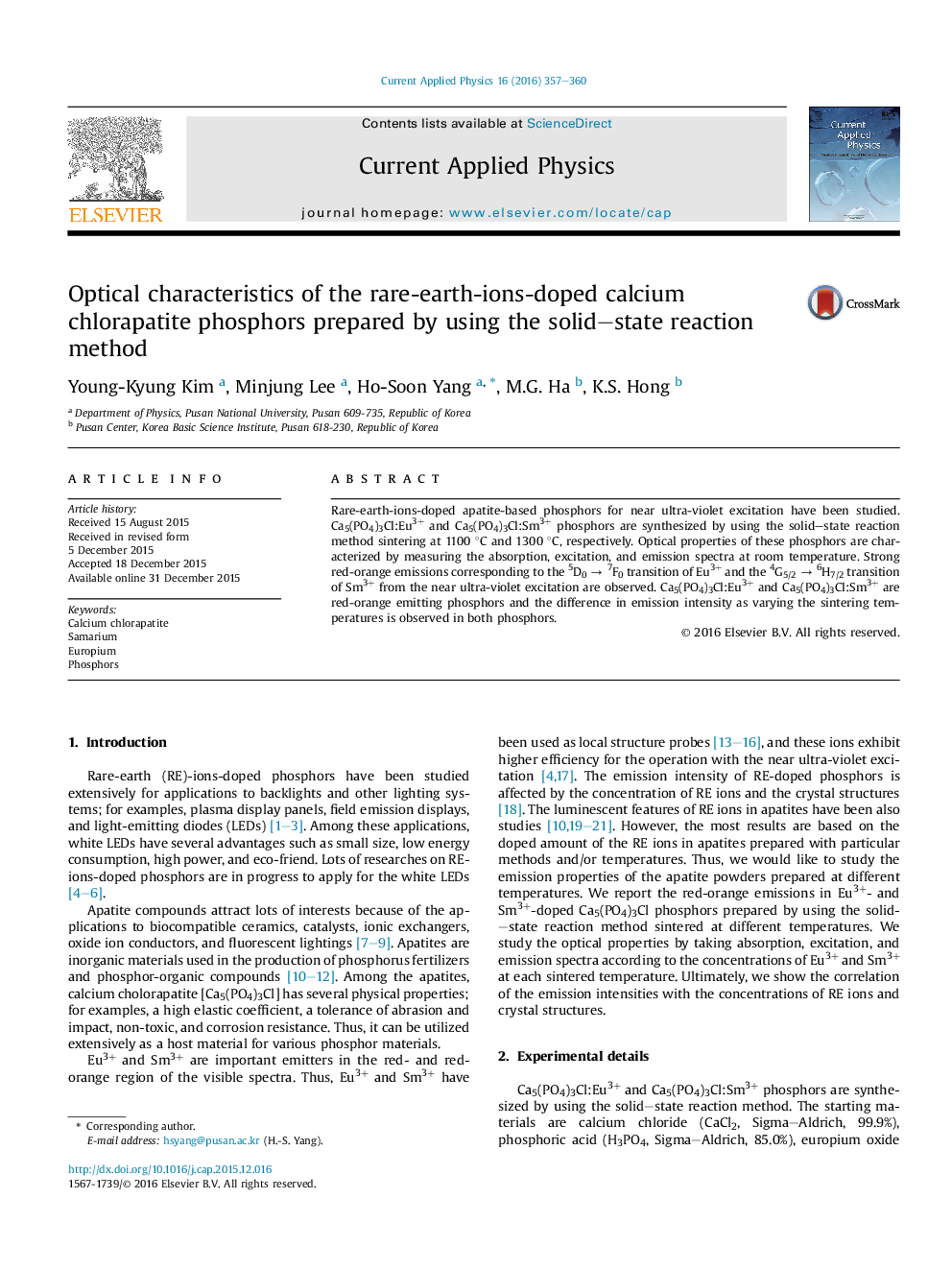| Article ID | Journal | Published Year | Pages | File Type |
|---|---|---|---|---|
| 1785813 | Current Applied Physics | 2016 | 4 Pages |
•Eu3+- and Sm3+-doped apatites are synthesized by using the solid–state reaction method.•Optical properties are characterized by measuring the absorption, excitation, and emission spectra at room temperature.•Strong red-orange emissions near ultra-violet excitation are observed in both apatites.
Rare-earth-ions-doped apatite-based phosphors for near ultra-violet excitation have been studied. Ca5(PO4)3Cl:Eu3+ and Ca5(PO4)3Cl:Sm3+ phosphors are synthesized by using the solid–state reaction method sintering at 1100 °C and 1300 °C, respectively. Optical properties of these phosphors are characterized by measuring the absorption, excitation, and emission spectra at room temperature. Strong red-orange emissions corresponding to the 5D0 → 7F0 transition of Eu3+ and the 4G5/2 → 6H7/2 transition of Sm3+ from the near ultra-violet excitation are observed. Ca5(PO4)3Cl:Eu3+ and Ca5(PO4)3Cl:Sm3+ are red-orange emitting phosphors and the difference in emission intensity as varying the sintering temperatures is observed in both phosphors.
